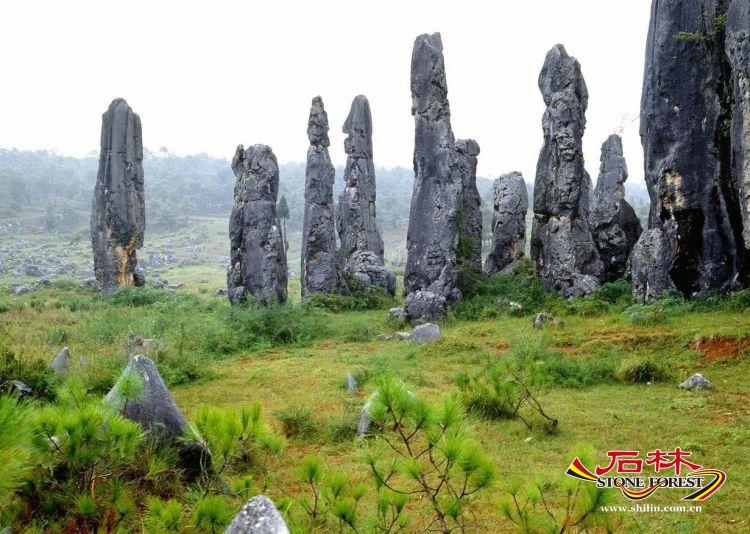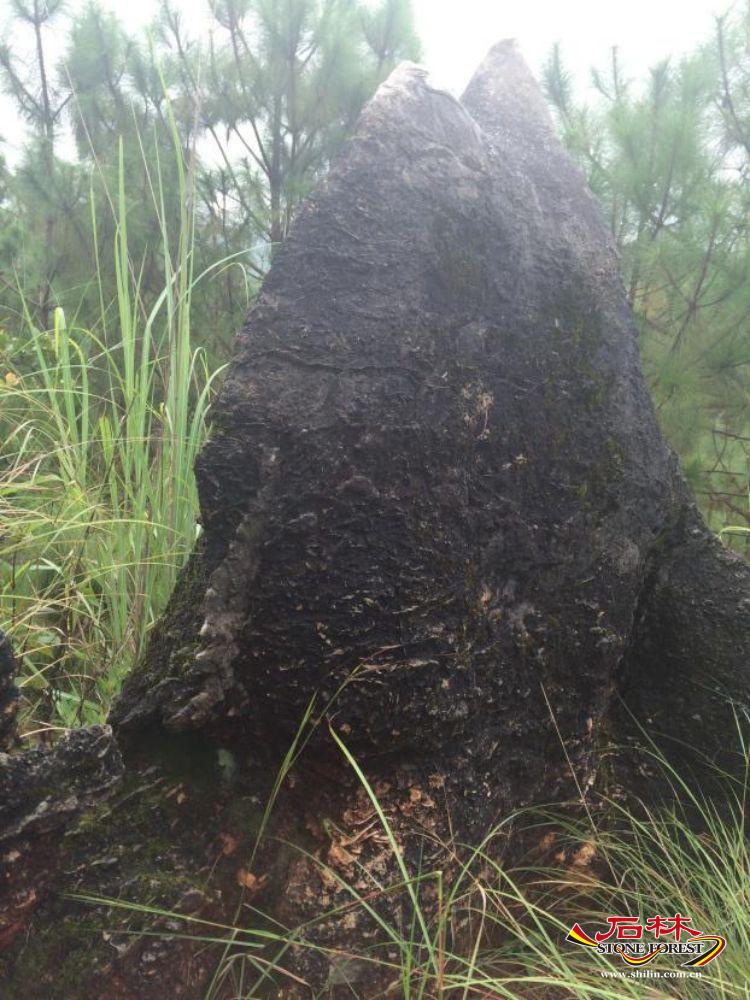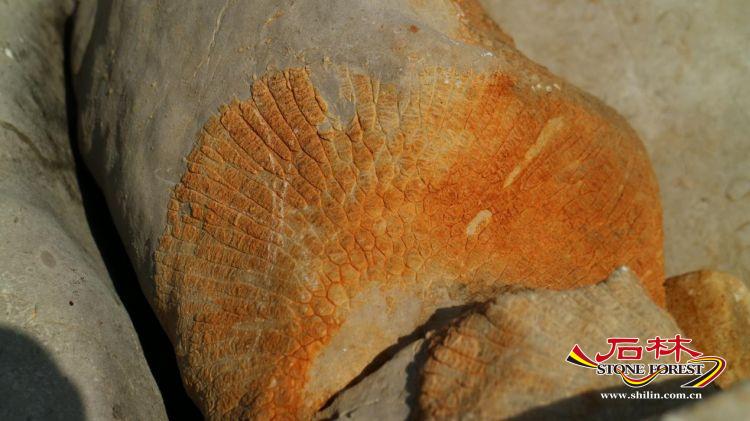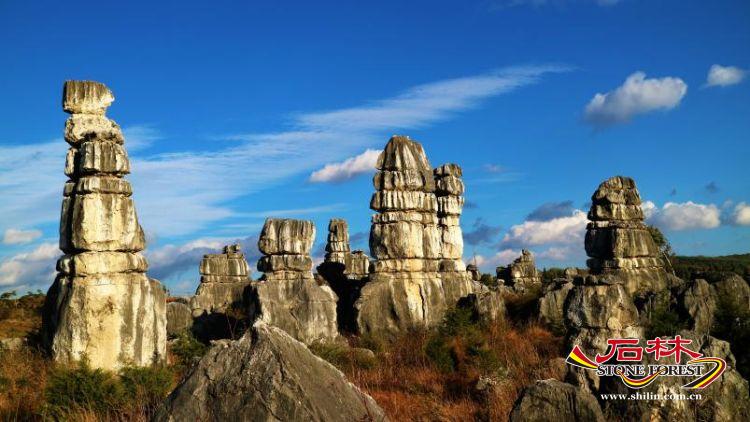- Children from Shijin Kindergarten Made a Study Trip to Shilin UGGp
- Have a spring date with Shilin flowers
- Call for hosts of the 12th International Conference on UNESCO Global Geoparks in 2027
- Call for applications: UNESCO Global Geopark Mentorship Exchange
- Representatives of Changshan Aspring UGGp Visited Shilin UGGp
- Shilin UGGp Visited Xingyi Aspiring UGGp
- Children from Peiqi Kindergarten Visited Shilin UNESCO Global Geopark
How the Stone Forest Satisfies World Heriatge Criteria
The Stone Forest of Yunnan, because of its outstanding scientific and aesthetic values, satisfies Criterion I and Criterion III for world natural heritage property:
Criterion I:“Sites nominated should be outstanding examples representing major stages of earth's history, including the record of life, significant on-going geological processes in the development of land forms, or significant geomorphic or physiographic features.”
1. The Stone Forest represents a unique geomorphic and physiographic feature in the world.
Few areas in the world have such rich carbonate peak forest features as the Stone Forest, within just a single district, numerous stone forest clusters and patches of different sizes, ages and shapes distributed in various topography, each with its special characteristics. The stone forest landform is hard to be classified into classical “pinnacle karst” not just because of its rich geomophological context, but for its special development mechanism as well. Therefore the Stone Forest, as recommended by many international karst experts, can only be defined as “stone forest landform” or “stone forest karst". Together with associated vegetation and water system, the Stone Forest represents a very special geomorphic and physiographic feature of the earth.

Liziyuanqing Stone Forest
2. The Stone Forest represents a special karst process.
The formation of the Stone Forest is the combination result of favorable geological, climatic and hydrological conditions. Because of Shilin area's special geological background, Permian carbonate has been modified by chemical, mechanical and biological erosion processes under different environments over the last 250 million years. The Stone Forest shows clearly how subsoil erosion and subaerial erosion contribute to the formation of the peak-forest landform and why subsoil erosion, in contrast to other remarkable similar sites, is the primary reason for the process. It is therefore of great scientific significance in the world.

Qingshuitang Stone Forest
3.The Stone Forest is the testimony to the regional tectonic uplift and evolution of Yunnan-Guizhou plateau.
At present the Stone Forest stands on the second tier of China's overall three-tier topography - Eastern Ynnan Plateau, some 2,000m above sea level. But in Permian and early Paleozoic period some 270 million years ago, Shilin and eastern Yunnan were covered by vast ocean, and marine sedimentary rocks widely deposited. Since the end of middle Permian 260 million years ago, Shilin area exposed as land and started its karst landform evolution. During the subsequent 200 million years, Shilin area experienced an intermittent but persistent uplift, from ocean to land, from coastal lowland to plateau. During the uplift process, Paleozoic sedimentary rocks in the surrounding areas were all folded as a result of tectonic movements, particularly the Himalayan movement. But the Shilin area is an exception, located in a “typhoon eye” position, the Permian carbonate layers always keep its original horizontal or near-horizontal occurrence, enabling stone forest landform to develop and thus making the Shilin area probably the only place in the world to demonstrate a region's over 200 million years uplift history with persistently developed stone forest karst.

Stone forest on plateau surface
4.Of the similar carbonate peak-forest landforms, the Stone Forest is unrivaled in the multi-phase complexity of its evolution from middle Permian to the present.
The oldest stone forest formed in late Permian period, and the latest is taking shape at present. Over hundreds of million years, the stone forest landform experienced a complex succeeding and replacing evolution. Most stone forest clusters were covered and re-exposed twice, first by volcanic rock - basalt in late Permian and then by lacustrine red-beds in early tertiary. Due to constant regional uplift and various erosions, stone forest clusters of different periods re-exposed again and again. Like a family, different stone forests, young and old, co-exist to display their “generation” relations and successive karst evolution, which is quite unusual in the world.
5. Ancient Stone Forest karst (Permian ) preserved and displayed in Shilin area.
One of the striking features of the carbonate rock is that the rock is susceptible to water dissolution; that is why in global context ancient karst landforms are hard to be preserved and and why existing remarkable carbonate peak forest landforms are mostly recent features in geological term, i.e. formed since late tertiary or even more recent. But the Shilin area is an exception where the initial Permian stone forest ( stone teeth ) landform were preserved due to immediate subsequent volcanic activity. Though most basalt cover has now been striped off through hundreds of million years’ erosion, there are still scattered basalt remnants in Shilin area, and those long buried, baked into black-colored ancient stone teeth starting to crop out and join their many younger“generations”.

Rock re-exposed from Permian basalt cover

Rillenkarren
5.Stone Forest features typical subtropical plateau karst eco-environment.
From Paleozoic to present, the Shilin area has experienced quite different climatic and phisiographic environmental changes. As an intact plateau drainage area, Shilin region at present concentrates various surface and underground karst elements such as stone forest, stone teeth, stone hill, depression, doline, cave, karst lake, waterfall, subterranean river, natural bridge, etc. constituting a complete picture of plateau karst. Together with associated local faunal and floral types, this area features typical subtropical plateau karst eco-environment.

Protected plant: Ottelia acuminate
6.Fossils in Permian limestone are important record of earth life.
The middle Permian limestone from which the stone forest developed contains exceptional rich marine fossils such as brachiopod, coral, foram, fusulina, etc. Some rock layers are almost entirely made of bioclasts. So far more than ten fusulina and coral fossil zones have been identified. They are not only of great regional stratigraphic correlation significance but also important record of earth life.

Corral fossil
Criterion III: “Sites nominated should contain contain superlative natural phenomena or areas of exceptional natural beauty and aesthetic importance.”
Shilin contain superlative natural phenomena or areas of exceptional natural beauty and aesthetic importance.
Stone Forest has long been regarded as one of the great natural wonders in the world. It is the aesthetic appeal of the stone forest that attracts numerous visitors from China and abroad.
No matter how people might imagine the Stone Forest (Shilin) before they see it, once here, they are inevitably both shocked and enchanted by its unique grandeur and unrivaled natural beauty. In the Stone Forest (Shilin) geopark, people will realize how magic the great nature is as the rigid rock has been shaped into such a wide variety of exotic shapes.
Individually, a stone pillar or column may take the shape of needle, fin, spire, mushroom, or whatever grotesque shape; some stones even mimic the images of human and other living things so vividly. Collectively, stone forest clusters may present as pinnacle forests or castles. The Stone Forest (Shilin) geopark is a truly “museum of carbonate perk forest”.


Besides macro-karst shapes, a wide variety of beautiful micro-solution forms occurred on the rock surfaces such as karrens, solution grooves, solution holes, solution pans, solution slots, solution channels, etc.
The beauty of the Stone Forest also lies in the combination of spectacular stone forest clusters and associated murmuring streams, mirror-like lakes and stretching mountains, lies in the majestic limestone pinnacles placed against a backdrop of red earth and green vegetation.
For centuries, the Stone Forest has served as the“natural model”for traditional Chinese garden art; it is an everlasting treasure house for artistic inspiration and creation, and also one of the best examples demonstrating“exceptional natural beauty and aesthetic importance”.
